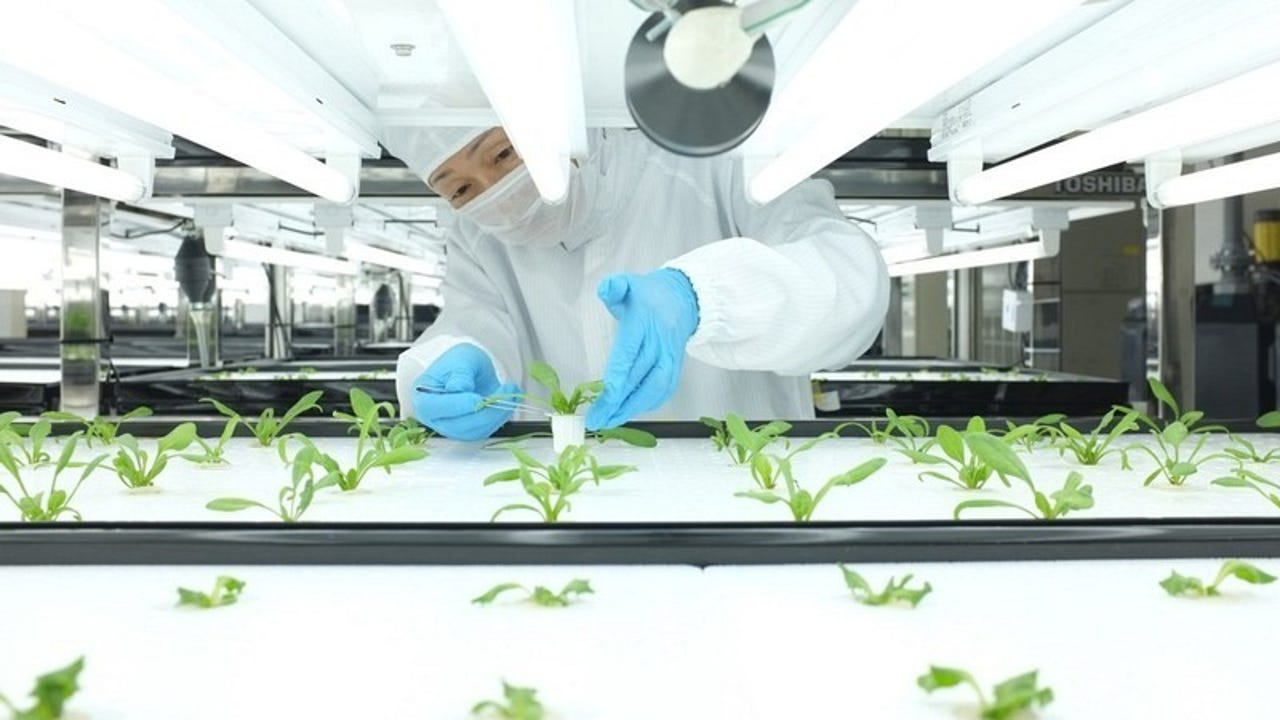Panasonic, Toshiba, and Sharp in race to develop farm equipment


Japanese electronics companies like Panasonic and Toshiba have turned old semiconductor factories into indoor farms to develop new ag tech.
Panasonic is making a big move into agriculture.
Robotics
It seems like an odd fit for a consumer electronics company with deep roots in industrial automation and welding tech, but the sudden pastoral streak is part of a broader trend that's bringing the likes of Toshiba, Sharp, and Fujitsu to the family farm.
At issue is the future of food. The informed opinion is that our current food production paradigm is unsustainable. Companies that can develop a strong portfolio of technologies that make growing food more efficient are going to be well-positioned in the decades ahead.
How screwed are we? The U.N. estimates that by 2050 we (collectively, as in humans) will need to sustainably produce 70 percent more food than we do today, as measured by calories, to keep up with global population growth. With rising standards of living, demand for animal protein is going way up, and that's a problem. Animal protein is much more resource intensive to produce than vegetable protein. In some Alice in Wonderland-esque riddle, the animals we raise to eat will soon be competing with us for food.
So will the vehicles we drive, for that matter, as ethanol production continues to increase. At the same time we'll have less land for farming as more people arrive on the planet in need of, you know, shelter of some sort. We'll also have less people to grow food because farmers are aging globally as younger generations migrate to cities.
Who can blame them? Food prices have been kept astoundingly low by a productivity boom in agriculture that's lasted about a century. That's the other bit of bad news. Global agricultural productivity is suddenly slowing for the first time in any living person's memory. No one is sure if it's a statistical anomaly or an indication of a creeping systemic crisis that's just beginning to rear its eschatological head. Odds are decent it's the latter.
All of which helps explain why Panasonic recently announced that a tomato picking robot is in development. In the shadow of a looming food crisis, a robot that picks tomatoes may not seem all that relevant, but it is.
With declining agricultural labor forces due to rising global wages, the tendency has been for agricultural machines to get bigger. Big machines allow fewer people to do more work. Driving Interstate 5 in California, it's a common sight to see tractor/sprayer combos that are forty yards wide.
But there's an upper limit on how big farming machines can get. That's because big machines weigh a lot, which compacts soil and wrecks root systems. As it stands, about 3% of arable land on large farms is sacrificed to the van-sized wheels of a modern tractor.
And big machines have another shortcoming. When they fail--and they fail fairly often in the difficult terrain and harsh environment of farming--productivity grinds to a halt. It's hard to build in redundancy when you're paying millions of dollars for your prized thresher.
One attractive answer is a distributed fleet of smaller autonomous farm vehicles that don't need drivers. Lightweight, relatively inexpensive autonomous robots that can do farm work quickly and reliably could have a huge impact on farm output going forward.
But robots haven't been up to the task of picking soft fruits and vegetables, which are easily bruised. That's finally changing thanks to advances in machine vision and tactile sensors. Last year I wrote about a proof-of-concept fruit picking and sorting robot built by Cambridge Consultants that employs the latest sensors and machine vision algorithms.
Panasonic's new system goes further by putting a networked robot in the field to harvest food based on an accurate assessment of color, shape, and location of each tomato. The final version will be able to automatically move around the ridges in a field and transport tomatoes or other fruit to baskets to transport vehicles, taking over every step of the harvesting process.
Which isn't to say that autonomous harvesting gets us anywhere close to out of the woods. The looming food problem is not going to be solved easily. A silver lining is that it's likely to inspire major breakthroughs in fields like chemistry, genetics, and engineering in the near future.
Hopefully the food issues also inspire reflection about our consumption habits. There's lots of fear about the rise of the robots, but the most pressing threats of our own making have nothing to do with metal and silicon.